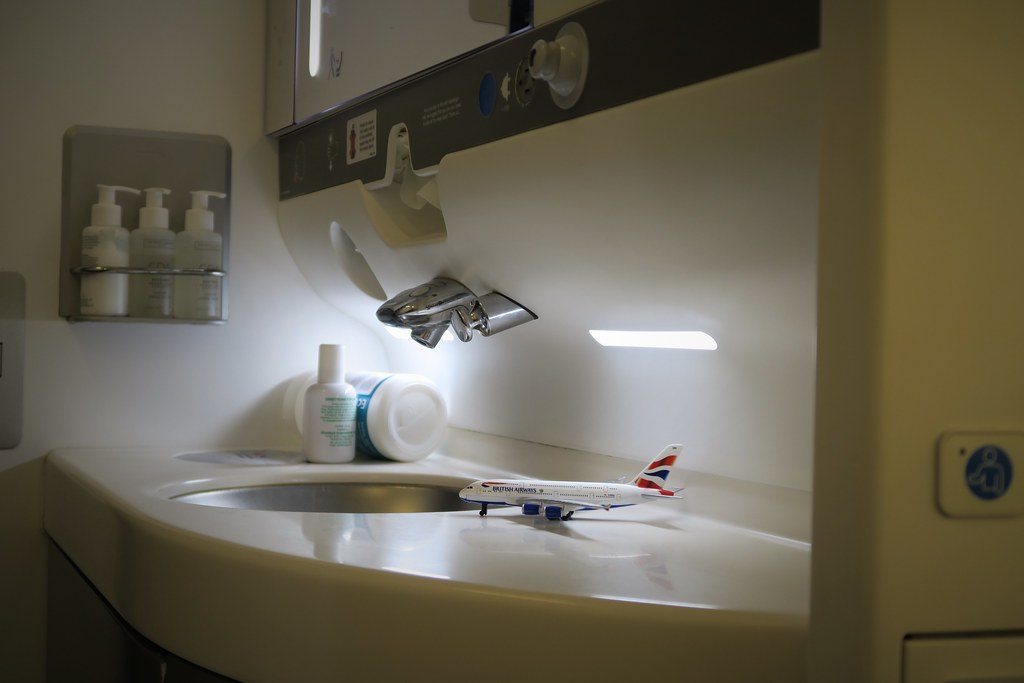It’s a question that might seem odd, but every passenger has probably wondered about it during a flight: How do airplane toilets actually work?
Advanced Technology at 35,000 Feet
Like everything in aviation, the toilet system aboard aircraft involves advanced technology where nothing is left to chance. Weight considerations alone are crucial, given the water requirements and waste volume for flights carrying sometimes hundreds of passengers. If there’s one thing aircraft manufacturers and airlines constantly battle against, it’s excess weight and the additional costs it brings, including increased fuel consumption.
That’s why airplane toilets are nothing like the ones in our homes, starting with that distinctive suction system—quite noisy as you’ve probably noticed—which is very different from a conventional flush. Instead of using large amounts of water, aircraft toilet systems use pressure differential with what’s called a “vacuum generator” that creates a strong pressure difference between the bowl and the storage tank positioned below.
When you press the flush button, a valve opens and this pressure difference instantly suctions the bowl’s contents, propelling them at high speed (we’re talking 220 mph!) with that characteristic whooshing sound toward the storage tank. A small amount of liquid, usually blue in color, is then used to rinse the bowl.
Of course, waste isn’t dumped mid-flight. It’s stored in a sealed, durable tank located in the aircraft’s cargo hold. Once on the ground, specialized vacuum trucks empty these tanks following strict protocols to drain and clean the reservoirs after each flight.
The Evolution of Aviation Bathrooms
This system hasn’t always worked this way. As you might expect, in aviation’s early days, aircraft were simply equipped with toilets that opened directly to the outside. It wasn’t until after World War II, with aviation’s expansion and technological advances, that the process changed to keep waste onboard. The current, more efficient system adapted to aircraft toilet constraints was implemented in the 1980s.
The engineering behind something as simple as using the bathroom at 35,000 feet (10,700 meters) demonstrates just how much thought goes into every aspect of modern aviation—even the most basic human needs require sophisticated solutions when you’re flying through the sky.

